The Formation of Stars and Brown Dwarfs and the Truncation of Protoplanetary Discs in a Star Cluster
The Formation of Stars and Brown Dwarfs and the Truncation of Protoplanetary Discs in a Star Cluster
Matthew R. Bate, Ian A. Bonnell, and Volker Bromm
The calculation models the collapse and fragmentation of a
molecular cloud with a mass 50 times that of our Sun. The cloud is
initially 1.2 light-years (9.5 million million kilometres) in
diameter, with a temperature of 10 Kelvin (-263 degrees Celsius).
The cloud collapses under its own weight and very soon stars start to
form. Surrounding some of these stars are swirling discs of gas which
may go on later to form planetary systems like our own Solar System.
The calculation took approximately 100,000 CPU hours running on up to 64
processors on the UKAFF supercomputer. In terms of arithmetic
operations, the calculation required
approximately 1016 FLOPS (i.e. 10 million billion
arithmetic operations).
For a more detailed description of the calculation, please see
Matthew Bates' web page.
Animations
Notes on formats:
AVI: Plays directly in Powerpoint. Medium to high quality, smallest file sizes.
Quicktime: High quality, largest file size.
Please see the copyright notice if you wish to re-publish
these images or movies.
| |
 | |
Movie showing the full evolution of the system. Two versions, 94 seconds and 163 seconds, the latter of which shows the star formation sequence twice. Specifically for scientific talks with annotations giving the time (yrs), size (AU), and column density scale (g/cm2) during the animation.
Available formats for 94 second animation:
AVI for Powerpoint, Windows or Unix (56MB, medium quality)
AVI for Powerpoint, Windows or Unix (172MB, high quality)
Quicktime for Windows or Unix (321MB)
Available formats for 163 second animation:
AVI for Powerpoint, Windows or Unix (94MB, medium quality)
AVI for Powerpoint, Windows or Unix (288MB, high quality)
Quicktime for Windows or Unix,
detail of star formation shown twice (565MB)
Simulation & visualisation by Matthew Bate, University of Exeter.
|
| |
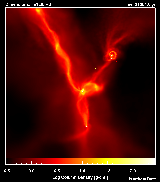 | |
Shorter (71 second) clip showing only the details of the star formation. Specifically for scientific talks with annotations giving the time (yrs), size (AU), and column density scale (g/cm2) during the animation.
Available formats:
AVI for Powerpoint, Windows or Unix (39MB, medium quality)
AVI for Powerpoint, Windows or Unix (109MB, high quality)
Quicktime for Windows or Unix
(254MB)
Simulation & visualisation by Matthew Bate, University of Exeter.
|
| |
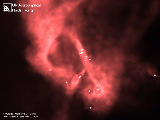 | |
A fly-through of the later stages of the
evolution of the star cluster, showing the details of some of the star
systems and proto-planetary discs.
Available formats:
AVI for Windows (57MB,
high quality)
AVI for Unix (138MB, high quality)
Simulation Matthew Bate, University of Exeter
Visualisation Richard West, UKAFF.
|
High Resolution Still Images and Commentary
High resolution, unannotated (1800x1800 pixel) versions that are suitable for
publication are available on request by emailing Matthew Bate
at: mbate@astro.ex.ac.uk
Click on the images below to view medium resolution, annotated
(600x600 pixel) versions.
| |
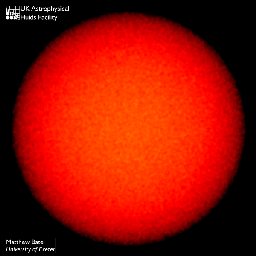 |
|
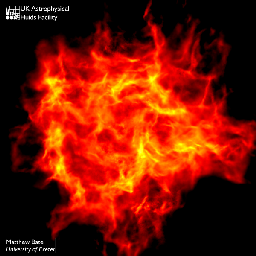 |
|
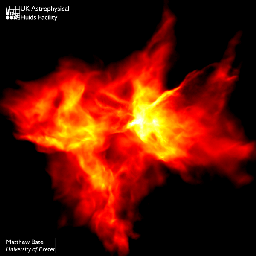 |
|
Clouds of interstellar gas are seen to be very
turbulent with supersonic motions. We begin with
such a gas cloud, 1.2 light-years across, and
containing 50 times the mass of the Sun.
|
|
As the calculation proceeds, the turbulent motions
in the cloud form shock waves that slowly damp
the supersonic motions.
|
|
When enough energy has been lost in some
regions of the simulation, gravity can pull the gas
together to form a dense "core".
|
| |
 |
|
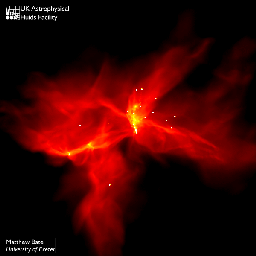 |
|
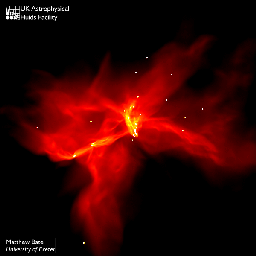 |
|
The formation of stars and brown dwarfs begins in
this dense core (see below).
|
|
As the stars and brown dwarfs interact with each
other, many are ejected from the cloud.
|
|
The cloud and star cluster at the end of simulation.
Some stars and brown dwarfs have been ejected
to large distances from the regions of dense gas
in which the star formation occurs.
|
|
 |
|
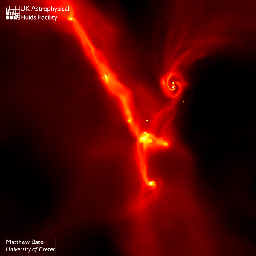 |
|
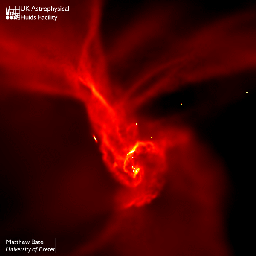 |
|
Nine images showing the star formation in detail.
They are 16 times smaller than the images above,
measuring 5100 AU across (1 AU is the distance
between the Earth and the Sun). Star formation
begins with the formation of a binary.
|
|
Gas filaments and discs form stars and brown
dwarfs. Some of the remaining gas falls in
around these protostars forming protoplanetary
discs and building up the masses of the protostars.
|
|
Stars and brown dwarfs fall together into a cluster.
The objects range in mass from nearly the mass of
the Sun down to as small as 6 times the mass of
Jupiter. A star with an edge-on disc is ejected,
centre left.
|
| |
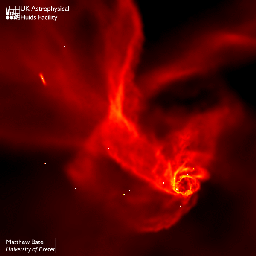 |
|
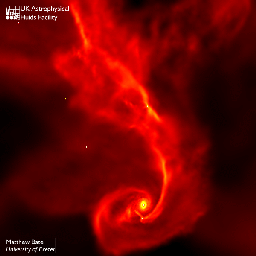 |
|
 |
|
An unstable system of 5 stars breaks up and
ejects stars from the cloud in three different
directions (lower right; see animations).
|
|
After a pause, star formation begins again with the
gathering together of more gas (centre). The discs
of gas that form around the protostars also contain>
a lot of mass and gravity can also cause
protostars to form within these discs. For
example, around the first binary, 3 objects form,
and several form in the large disc in the image
above (bottom).
|
|
The orbits of these objects are unstable and they
are quickly ejected from the binary. Because they
are ejected from the dense gas just after they are
formed they are unable to increase their masses
by attracting the residual gas and they become
brown dwarfs with masses of less than 75 times
that of Jupiter. Other objects are able to attact
enough gas that they become proper stars.
|
| |
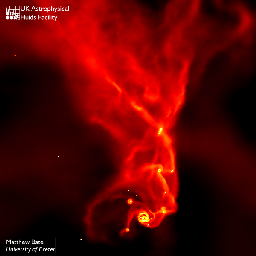 |
|
 |
|
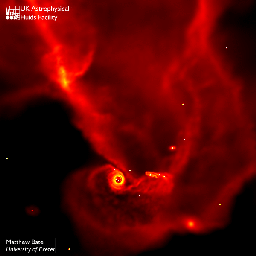 |
|
Complex gas flows and stellar encounters. Many
of the stars and brown dwarfs are surrounded by
discs which are truncated during encounters.
|
|
Brown dwarf with a large disc is ejected, lower left.
|
|
The stars and discs in the main star-forming
region at the end of the calculation.
|
Copyright: The material on this page is the property of Matthew Bate.
Any pictures and animations may be used freely for non-profit
purposes (such as during scientific talks) as long as appropriate
credit is given wherever they appear. Permission must be obtained
before using them for any other purpose (e.g. pictures for publication
in books).
|

















